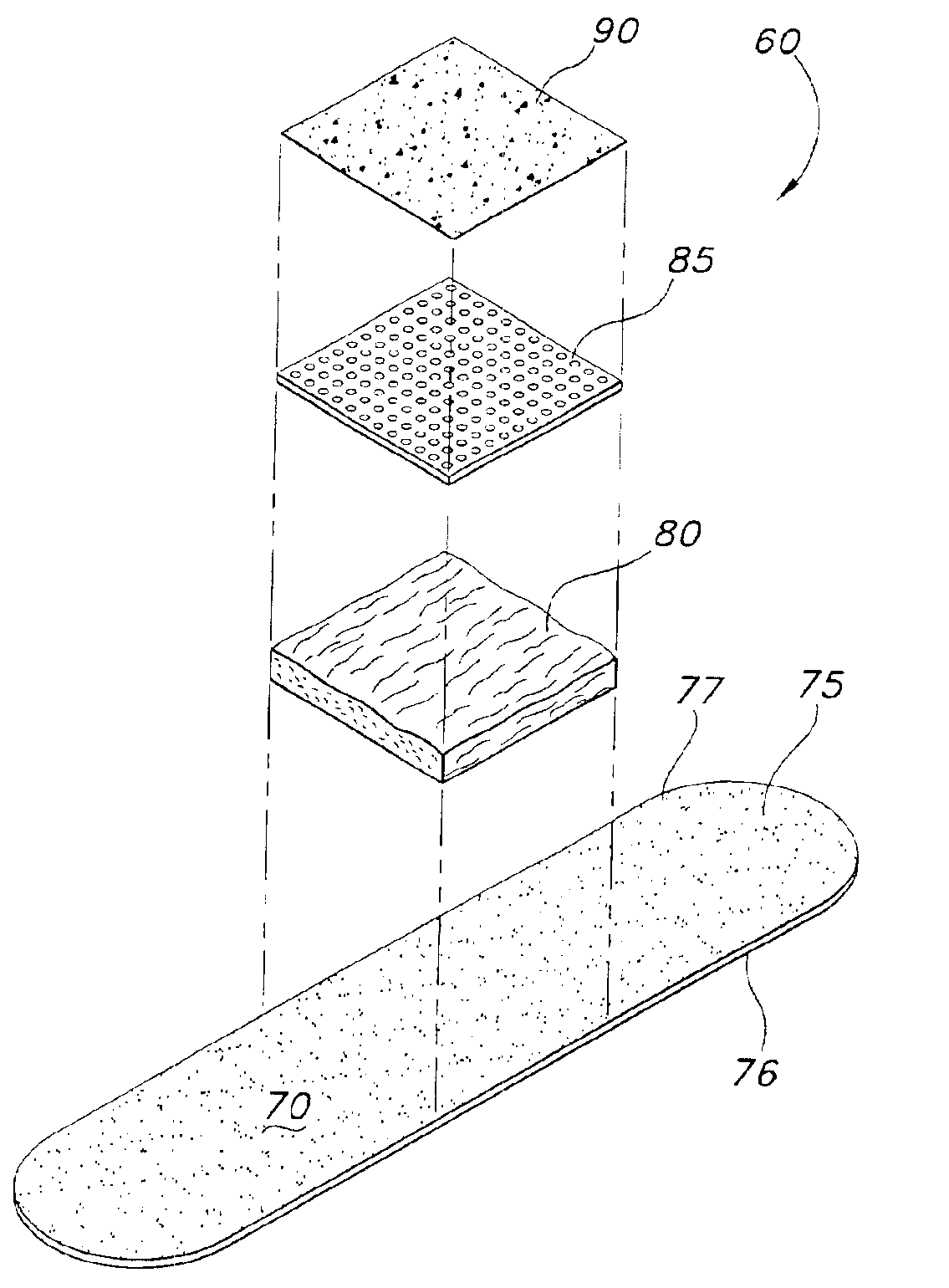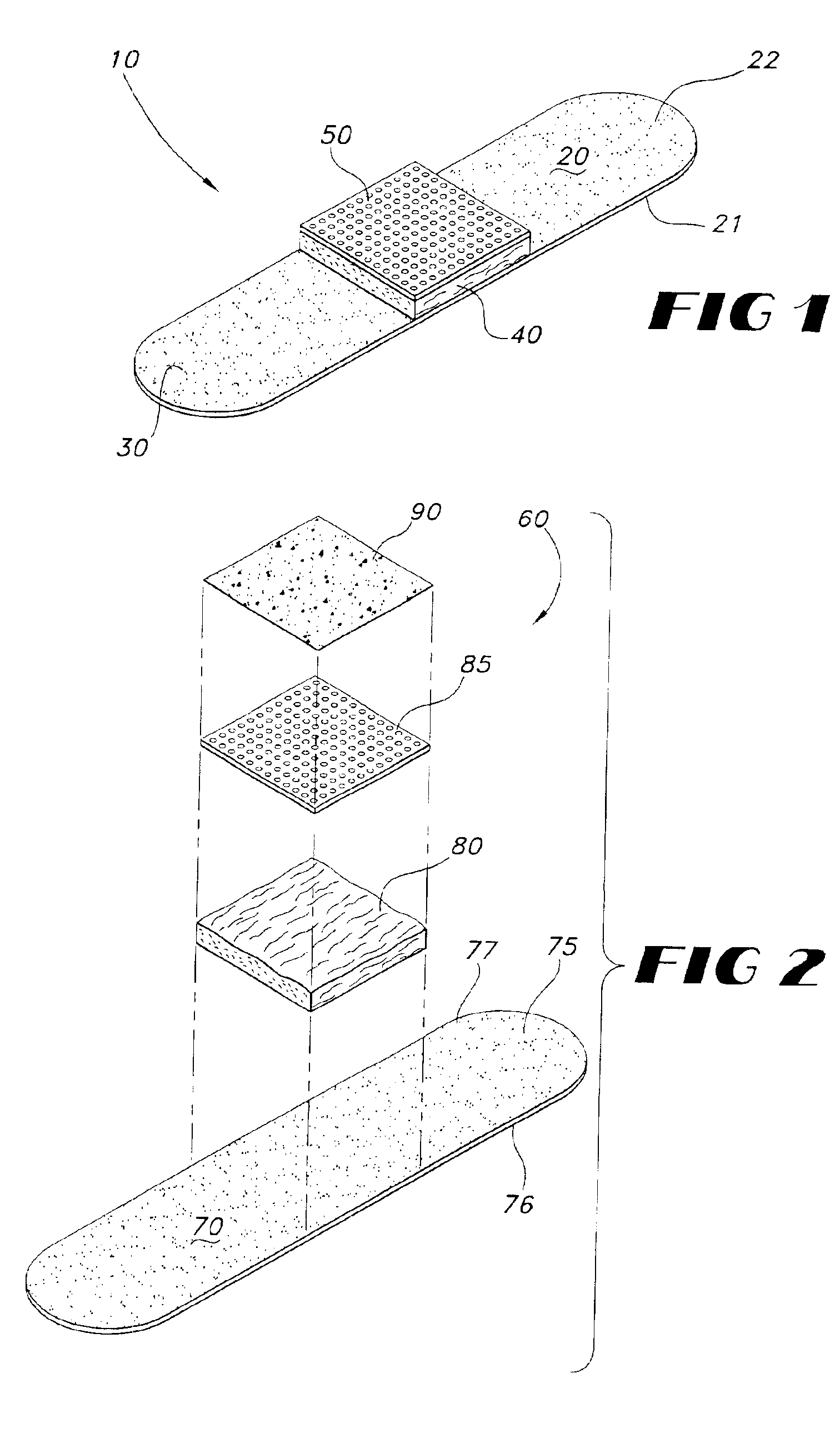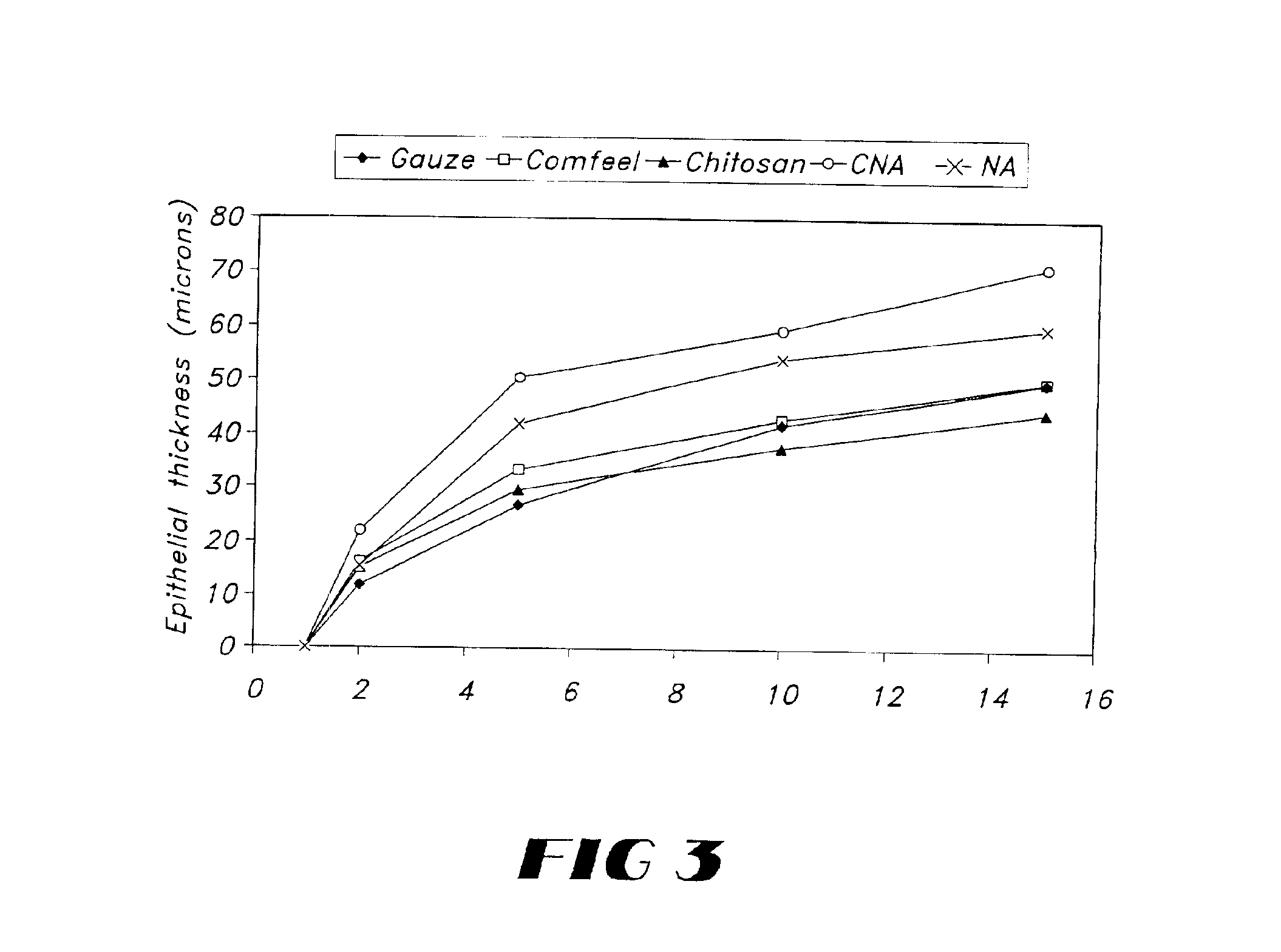Bandage, methods of producing and using same
- Summary
- Abstract
- Description
- Claims
- Application Information
AI Technical Summary
Benefits of technology
Problems solved by technology
Method used
Image
Examples
Embodiment Construction
Definitions:
[0031]For the purposes of this application the term “antimicrobial agent” shall refer to a compound which stops, prevents, or destroys the growth of microorganisms.
[0032]For the purposes of this application, the term “hemostatic agent” shall refer to a compound which reduces blood clotting time.
[0033]For the purpose of this application, the term “naturally occurring compounds” shall refer to compounds which can be found in nature, such as from soil, marine life, plants and terrestrial organisms.
[0034]As used herein, the term “bandage” shall be used interchangeably with “wound dressing” and “dressing”, and shall refer to a covering to be placed over a wound.
[0035]As used herein, the term “transferable” shall be interchangeable with “releasable”, and shall refer to the ability of a substance to be passed from a substrate such as a bandage, bandage layer or component, to a wound, through contact with the wound.
[0036]As used herein, the term “acute wound” shall refer to a wo...
PUM
| Property | Measurement | Unit |
|---|---|---|
| Flow rate | aaaaa | aaaaa |
| Adhesivity | aaaaa | aaaaa |
| Area | aaaaa | aaaaa |
Abstract
Description
Claims
Application Information
 Login to view more
Login to view more - R&D Engineer
- R&D Manager
- IP Professional
- Industry Leading Data Capabilities
- Powerful AI technology
- Patent DNA Extraction
Browse by: Latest US Patents, China's latest patents, Technical Efficacy Thesaurus, Application Domain, Technology Topic.
© 2024 PatSnap. All rights reserved.Legal|Privacy policy|Modern Slavery Act Transparency Statement|Sitemap



